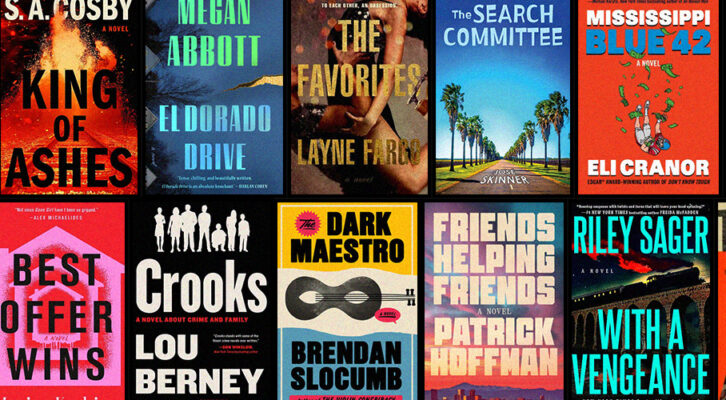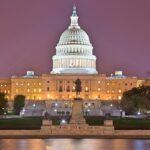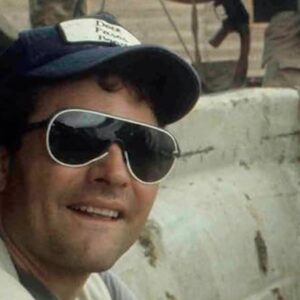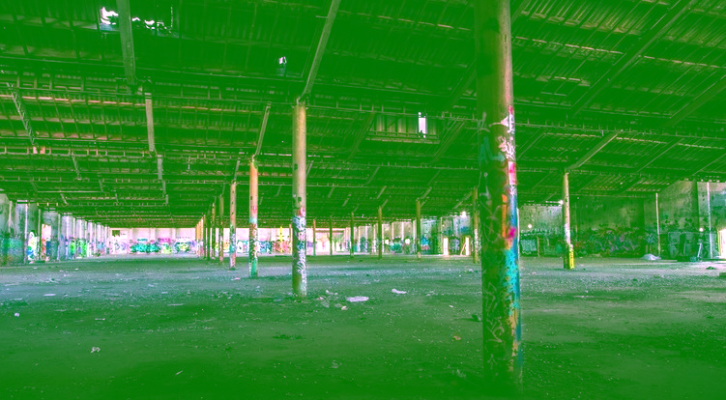
Our Superfunds, Ourselves: Inside America’s Polluted Urban Ruins
Ariel Courage Explores a Systematic Legacy of Environmental Contamination and Neglect in the United States
I once lived near an abandoned power plant. It was a rotting red-brick Rundbogenstil with reverse brick crenellations under its eaves; a plaque under its gable said it was erected in 1892. Scaffolding—itself in a state of disrepair, graffitied and missing planks—cuffed the exterior. The facade featured a vaulted window with most of its panes knocked out. A thin knobby tree had started to grow through it, shy green leaves sprouting through the frame.
I projected a lot of symbolic value onto that tree, which grew despite adversity: The place was a superfund site. In moving to the area I’d become, without knowing it, a statistic; one in six Americans lives within three miles of a superfund. When the trolley system it once served went bankrupt, the power station shifted to rehabilitating old electrical transformers, which for decades leaked PCBs and VOCs into the water table. An initial cleanup in the 1990s failed, and the discovery of additional asbestos-containing materials buried on-site complicated a second attempt. The investigation and feasibility study took years, further delayed by litigation.
In the meantime, the building stood empty, poorly marked, unguarded, and attractive to oddballs like me.
*
America is too young to be a country of ruins. Ancient signs of human activity remain at places like Poverty Point and Mesa Verde, but thanks to a combination of deliberate destruction, environmental and cultural impacts on the durability of monuments, and a puritan ethic that prioritizes profits over preservation, most American lives feature little that belongs to antiquity. Our ruins are abandoned malls, hospitals, factories, McMansions—or Robert Smithson’s ruins in reverse, at the construction sites of places yet to be built.
It’s possible that, lacking access to purer nature, my impulse to romanticization attached itself to what was available to me.
The familiar, less-than-grand character of these places gives them an evil air. That many are poisoned by the remnants of commercial activity adds to their malevolence. They’re better places for jump-scares than mournful Byronic contemplation. Interest in them is often considered morbid, or exploitive by locating beauty in whatever suffering presumably led to their abandonment. Their cultural reflexivity doesn’t suit the standard narrative of American success and exceptionalism. Mostly they’re ignored or invoked as economic bogeymen: there but for the grace of God all of America becomes Detroit circa 2007.
Photography can make industrial ruination tangible and less the realm of science fiction or horror, even if it’s sometimes described as unreal, alien, or apocalyptic. J. Henry Fair, David T. Hanson, and Fazal Sheikh take aerial photographs of industrial waste sites that are as beautiful in their swirls of vivid colors as they are alarming. The photographer Camilo Jose Vergara, documentarian of urban ruin, proposed letting parts of Detroit revert to a “ruins park” of overgrown skyscrapers. In the 1970s, the EPA tried to popularize its mission via the DOCUMERICA project, in which photographers captured America’s environmental spoilation: Liberty Island drowning in an oil slick, children playing in a yard under the shadow of an arsenic-spewing smokestack.
*
It’s possible that, lacking access to purer nature, my impulse to romanticization attached itself to what was available to me. The power station had some historical interest, but not enough to get it designated a landmark. It was just a non-valuable place. In fact, it held negative value, requiring as it did expensive and time-consuming remediation.
Of the overlooked, undeveloped-but-already-half-spoiled, interstitial landscapes of suburban New Jersey, Daniel Sherrell wrote in Warmth: “…these spaces felt sacred, possessed of some strange spirit that had emerged to fill the void of our neglect…I wanted…a kind of scraggly aesthetics, the ability to discern amid the many endings some trace of a beginning.” A strange spirit drew me to the power station. It combined charm and ugliness, purpose and accident, stability and danger into a toxic, Tarkovskian sublime. One of the enduring appeals of post-apocalyptic fiction is that it is also generally post-money.
Harkening to a past embodied by ruins has its interpretive dangers—Nazi architect Albert Speer designed buildings for their eventual “ruin value,” trying to assert a measure of control over death and decay—but evil has a fetish for classical antiquity. What they discard or ignore remains open to better possibilities. These monuments to failure or neglect also contain reminders of the inevitability of entropy, which only makes totalitarianism seem all the more absurd. As Georg Simmel argued, ruins can contain in them alternate visions of the future, continuing to acquire new form and meaning with time. His proposal for Detroit was rightly controversial, but I think Vergara was correct in identifying a playground-like quality in American blight; to find it unexpectedly enchanted.
*
The power station was in an area that had been home to hard industry but had softened to outlet stores, potato chip distribution centers, salt sheds. Freight tracks were embedded in the asphalt, which had eroded in some places to reveal patches of old cobblestones. At night the area had an emptiness that never felt too lonely because you knew workers were coming back in the morning. I walked by it often because just beyond it was a fenced-off pier with a colony of feral cats and spectacular sunset views.
Going inside was inevitable. By then I knew it was a superfund. I’d taken environmental science classes, read A Civil Action, but my curiosity outweighed my common sense. One night a tall friend helped me find a hole in the floor of the scaffolding big enough to clamber to a second level, and from there we entered via a broken window.
A lack of appreciation for ruins and a lack of appreciation for nature—for that which isn’t immediately useful—stem from a similar dismal impulse.
The space inside was huge, cathedral-like. Ink covering the walls and green glass from smashed beer bottles suggested we weren’t the first visitors—few places in a big city are left unexplored. The floor had fallen away in several places, leading to dark chasms where old turbines stood like silent sentries. Most of the contamination was concentrated there, on the lower floors. Someone had laid a wobbly plank across the void between the power station and the next roof, from which you could see the skeleton of an old gasholder. I looked out at it, wondering whether every generation has experienced the exact same sense of decline or whether, as more damage accrues, each generation will feel it more acutely.
At the far end of the hall, that skinny tree waved in the wind.
*
Superfunds are aesthetic problems but also political ones. For a while pollution seemed like a diminishing problem in America, due to a combination of improved technology, regulation enforcement, pollution-intensive manufacturing moving overseas, and the fact that the EPA only in 2016 began systematic testing of 80,000 registered chemicals—i.e., the scope of the problem was never fully understood. Trump may reverse that. Republicans, pushed by chemical industry lobbyists, are trying to retire a tax on chemicals earmarked for “orphaned” superfund sites. They’re attacking the bill that has, since 2016, allowed the EPA to begin testing all those chemicals. Lee Zeldin has pledged to cut the EPA’s spending by 65% and dismantle the regulatory framework around various pollutants. They are also expanding development on public land.
It remains to be seen how these plans will be implemented, how much damage they will cause, and whether any purported economic benefit will materialize. It strikes me as a bad trade between short-term profits for a few and long-term consequences for most. Ruins are often “buried almost completely by prosperity,” but the drive to prosperity also leaves ruination in its wake. A lack of appreciation for ruins and a lack of appreciation for nature—for that which isn’t immediately useful—stem from a similar dismal impulse. The more we strip away and denature, the more we will have no option but to seek solace in Sherrell’s “scraggly aesthetics.” Everyone will pay premiums to access privatized beauty, as in Helen Phillip’s lightly dystopian novel Hum, or become as weird as me and trawl for odd derelict scraps.
And we may not have even that. Once something is ruined it often can’t be gotten back. A few years after moving away, I walked by the power station again, only to find it gone. The structure was demolished, the contaminated soil beneath excavated and transported for off-site disposal. The area was then capped with asphalt. It is now nothing more than a parking lot.
__________________________________
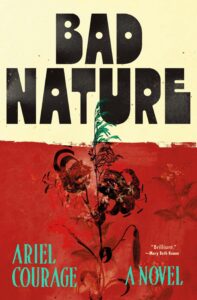
Bad Nature by Ariel Courage is available from Henry Holt and Co., an imprint of Macmillan, Inc.
Ariel Courage
Ariel Courage is a graduate of the Brooklyn College MFA program, where she was editor-in-chief of the Brooklyn Review. She’s currently an assistant fiction editor at Agni. Her short work has appeared in











